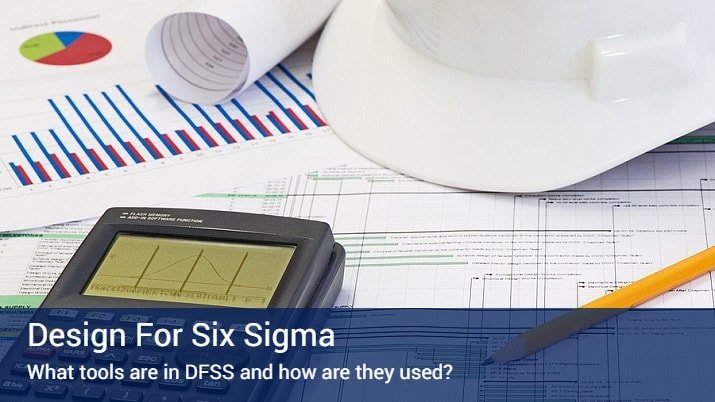Design For Six Sigma (DFSS)

Last Updated March 8, 2024
What is Design For Six Sigma?
Design For Six Sigma (DFSS) is a methodology using the Six Sigma principles in the design of products and their manufacturing support processes. DFSS helps businesses design products, processes and services. Design teams can use DFSS to develop safe, reliable and competitive products faster and more efficiently.
Like other Six Sigma tools, DFSS is used to streamline processes and produce the best products or services with the least amount of defects. It repackages many of the successful Six Sigma tools and techniques into a framework structured for developing new products. Many of the Design For Six Sigma elements are the same as the Advanced Product Quality Planning (APQP) used by the auto industry.
Design For Six Sigma also integrates fundamental Six Sigma tools such as Design of Experiments (DOE), Failure Modes and Effects Analysis (FMEA), Design for Reliability (DFR) and Design for Testability (DFT).
Businesses practicing Design For Six Sigma can benefit in a number of areas:
- Identifying the Critical to Quality (CTQ) attributes most important to customers.
- Enhanced process capability – determining what the process can deliver.
- Reduction of variations to a minimum in final product fabrication.
- Stable operations – ensuring reliable, predictable processes and improving the customer experience.
- Designing superior performance– to meet customer expectations and process proficiency.
In addition, the DFSS toolbox utilizes a number of proven Six Sigma elements, including:
Project Charter – An important first step in the design process is where the project team identifies the business need, clarifies objectives, deliverables, schedule, budget and roles. Parameters for project success are also identified in this step.
Voice of the Customer (VOC) – Understanding what the customer wants can be accomplished by analyzing existing customer feedback and polling potential customers through surveys, focus groups and questionnaires.
Quality Function Deployment (QFD) – A variety of mediums are used to make design decisions for new products or services. Customer needs are translated into Critical To Quality (CTQ) characteristics of the product and process.
Design for Reliability (DFR) and Design for Testability (DFT) – These tools can help with fine-tuning the design for the lifecycle of the product to minimize costs and maintain reliability.
Failure Modes and Effect Analysis (FMEA) – Identify potential failures in the product design and manufacturing process and develop controls to minimize or correct them.
Design of Elements (DOE) – Optimize parameter values and reduce variation to create a robust design.
Pilot – Performing a small-scale test of a new product or service can help prevent lost revenue and dissatisfied customers. Evaluate whether the product meets performance and customer expectations and make necessary modifications before doing a full-scale rollout. In some cases, it’s possible to perform computer simulation prior to the pilot test.
Validation – Along with pilots and simulations, businesses can verify a product’s success using design reviews, qualification testing, customer evaluations, peer reviews, focus groups and market testing.
Finally, it may be helpful to use a DFSS scorecard to measure the product’s success from start to finish. This way, project teams can determine if the results meet the quality target.




